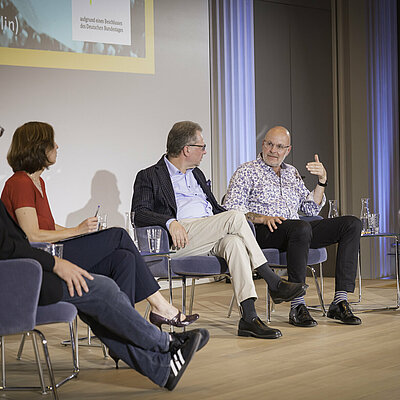
Re-examining the attack at the 1972 Olympics
Upon the 50th anniversary of the attack in September 2022, German President Frank Walter Steinmeier spoke of a threefold failure that occurred at the time.
“The first failure involved the preparation of the Games and security planning. The second encompassed the events of September 5 and 6, 1972. The third failure began the day following the attack: the silence, the repression, the forgetting.”
In autumn 2022, the German government, with the support of the Bundestag, decided to set up an international commission of historians to conduct a comprehensive academic study on the attack, its background, and aftermath. This is part of an overall concept with the motto “Reevaluate. Remember. Recognize.” and is connected to an agreement with the families of the Israeli victims. In April 2023, the Federal Ministry of the Interior and Community (BMI) launched the project and eight historians from Germany, Israel, and the United Kingdom, along with the Leibniz Institute for Contemporary History (Institut für Zeitgeschichte – IfZ), have been tasked with the study. The IfZ established a research unit and an administrative office in Munich to this end.
The attack on the Olympic Games has been the subject of numerous television documentaries, full-length films, non-fiction books, and academic publications. However, there has yet to be a systematic historical examination of the events. Many questions remain unanswered. And even five decades after the event, not all of the historical sources have been explored. These include many documents from archives and governmental agencies that have not been made accessible until now. The availability of all important sources is indeed essential for the research and the BMI has assured its full support to participating scholars in this regard.
The project will focus on the following areas:
The immediate background, including the security concepts provided by the responsible authorities and the planning drawn up by the “Black September” group,
the exact course of events involving the taking of hostages and the police operation, the actions of the crisis management team and other decision-makers,
the aftermath of the attack, including the consequences for West German Middle East and security policy, the development of a culture of remembrance, and engagement with the families of the victims.
More on the research questions
The project is planned for three years. The results will be published in a report to the Federal Ministry of the Interior and Community and in an academic reference volume.
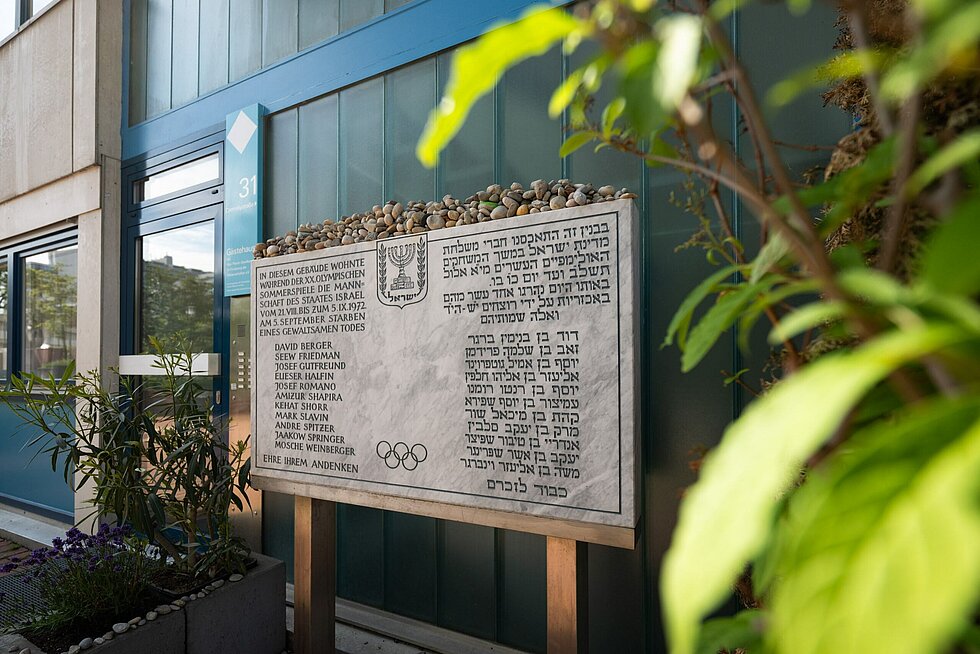
The attack
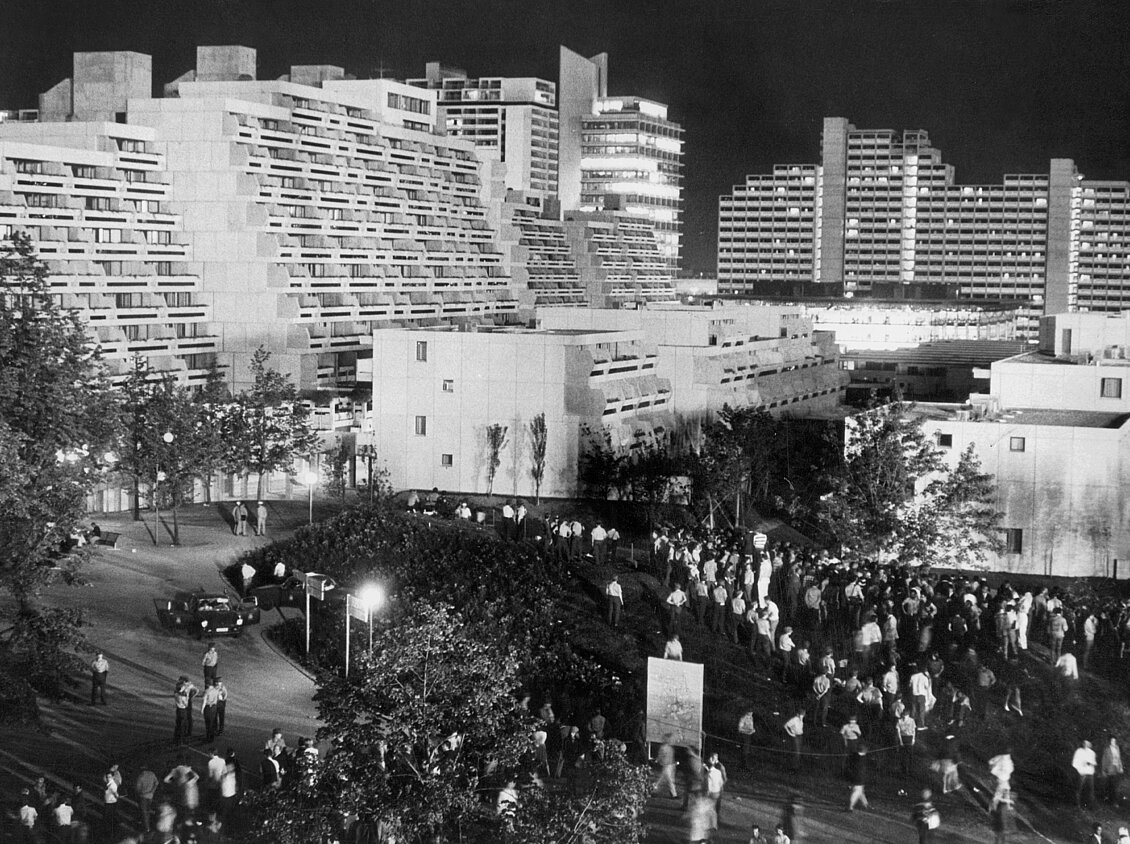
Early in the morning of September 5, 1972, eight armed men climbed over a gate at Munich’s Olympic Village. These members of the Palestinian terrorist organization “Black September” stormed the quarters of the Israeli team at Connollystraße 31. Seven coaches and referees were present in the first apartment, and the assailants were able to overpower six of them: Yosef Gutfreund, Kehat Shor, Andrei Spitzer, Jacob Shpringer, Amizur Shapira, and Moshe Weinberg. Only Tuvia Sokolsky managed to escape through the terrace door. The attackers then coerced Moshe Weinberg into leading them to the six athletes located in a second apartment: David Berger, Zeev Fridman, Eliezer Halfin, Yosef Romano, Mark Slavin, and Gad Zabari. The attackers forced them all into the first apartment, with only Gad Zabari managed to escape via the basement stairs. Other team members in different apartments remained undiscovered. Immediately after confining the hostages to the first apartment, the Palestinians murdered two of them, Moshe Weinberg and Yosef Romano. Nine team members now remained in the hands of the assailants.
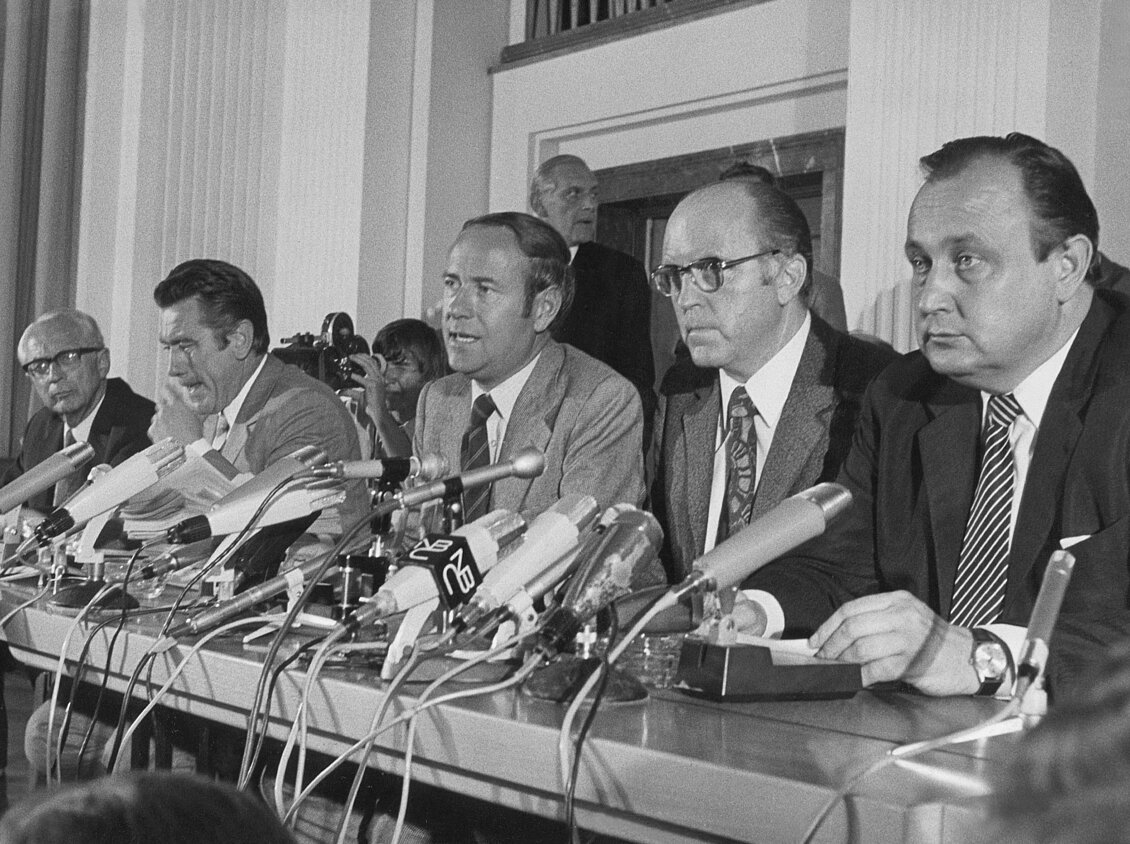
The hostage-takers threatened to kill the remaining Israeli athletes and issued a written demand for the release of over 300 prisoners, most of whom detained in Israeli jails. The list however also included the German RAF terrorist Ulrike Meinhof. A crisis team assembled in Munich, including Munich’s Chief of Police Manfred Schreiber, Bavarian Interior Minister Bruno Merk, and Federal Interior Minister Hans-Dietrich Genscher. The Games went on at first, even as photographers, cameramen, and curious onlookers began to crowd into the Olympic Village.
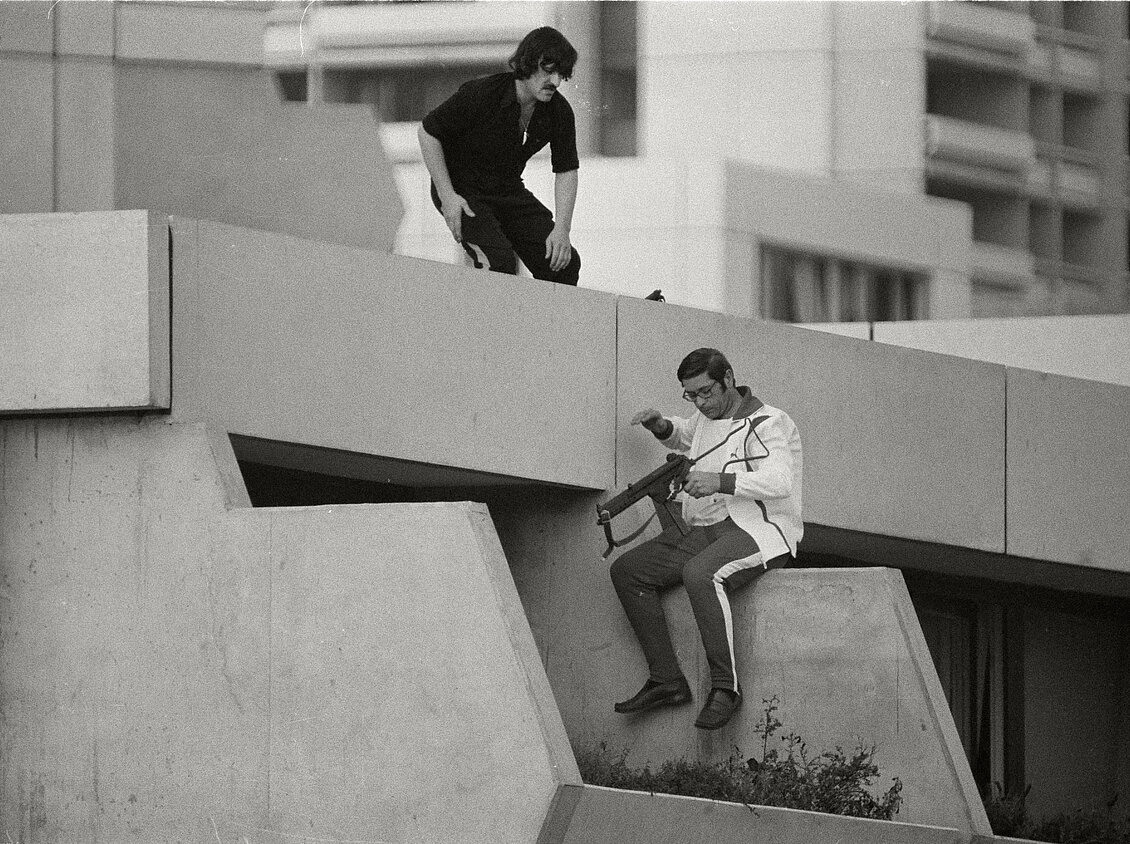
The Israeli government, led by Prime Minister Golda Meir, decided not to give in to the hostage-takers’ demands. Israel offered to deploy a special forces unit but the German authorities decided not to accept the proposal. In their negotiations, the crisis team managed to persuade the perpetrators to extend their ultimatum several times throughout the day. All the while, a police task force took positions on nearby rooftops, prepared to storm the apartment. These images of officers in tracksuits made their way around the world. The police officers soon gave up the plan to overpower the assailants in the apartment, however, as it would have endangered both the lives of the hostages and their own lives.
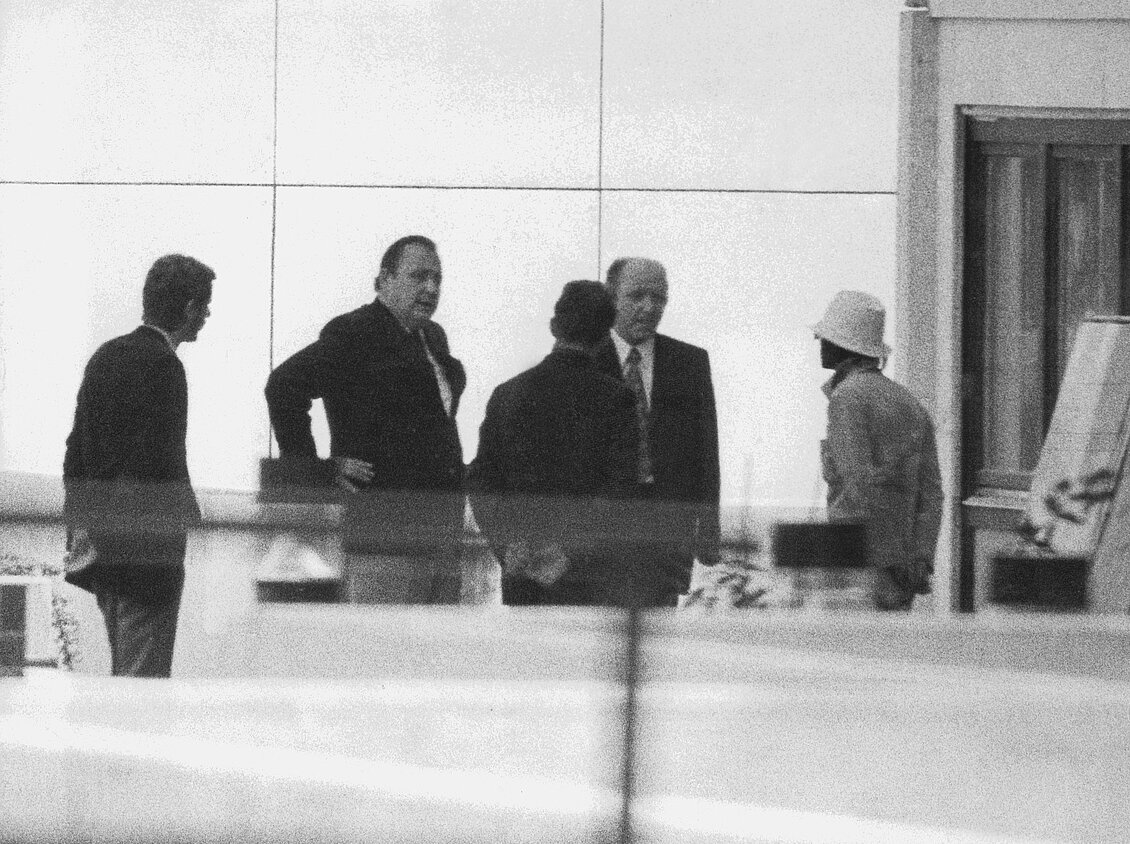
By late afternoon, the Olympic Games were in fact suspended. The terrorists now demanded to be flown to Egypt along with the hostages. The crisis team pretended to comply with the demands while setting a trap for the assailants. Two scenarios were drawn up for the rescue. Plan A called for the officers to already overpower the hostage-takers in Munich once they left the apartment. Plan B involved a rescue attempt at Fürstenfeldbruck Military Airfield, which was being used for civilian purposes during the Games. Plan A was considered not feasible in part because the terrorists were able to see through the police’s plan. The hostages and Palestinians were thus flown to Fürstenfeldbruck in two helicopters, landing there around 10:30 p.m.
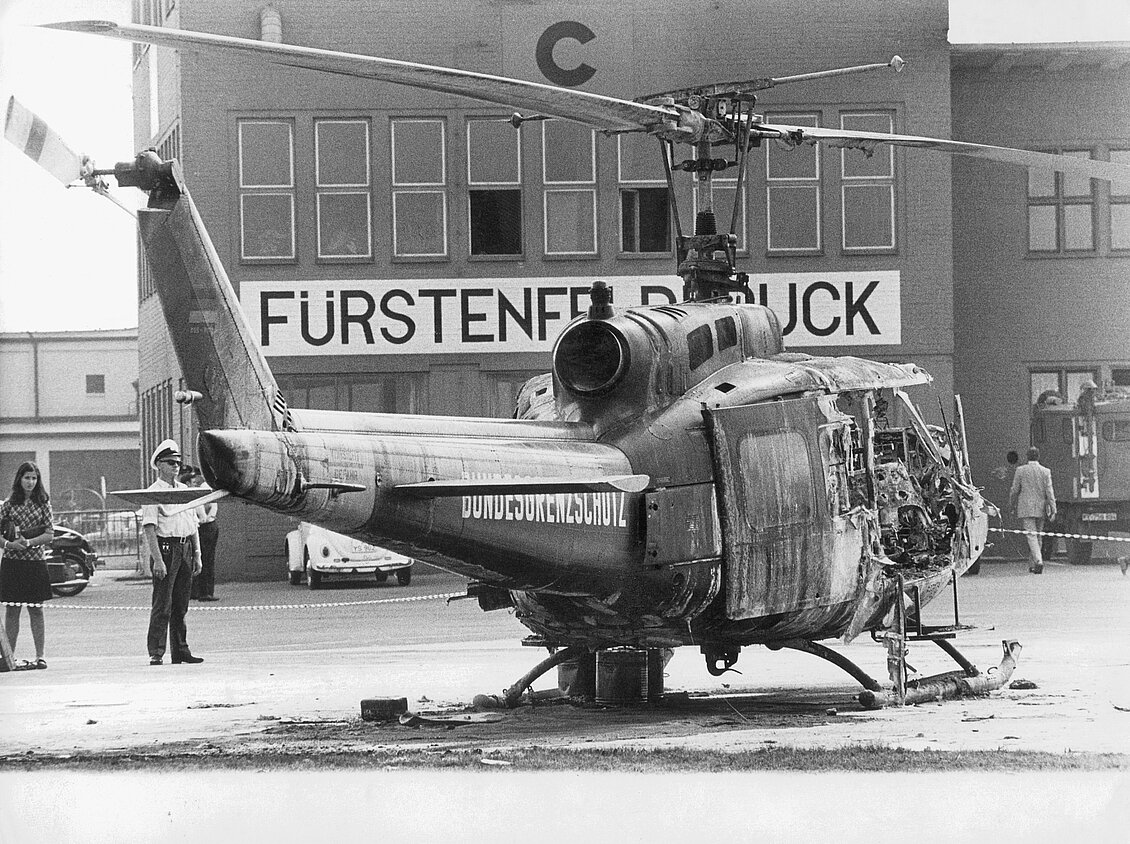
An empty Lufthansa airplane awaited at the field. The policemen who had been stationed inside to overpower the hostage-takers had left the plane shortly before, as they had been inadequately equipped and had little protection. Once two of the terrorists had inspected the plane and likely recognized the trap, the police opened fire. The terrorists fired back and murdered the defenseless hostages, who were still tied up in the helicopters. Policeman Anton Fliegerbauer was also shot and killed by the assailants. Around midnight, one of the helicopters caught fire.
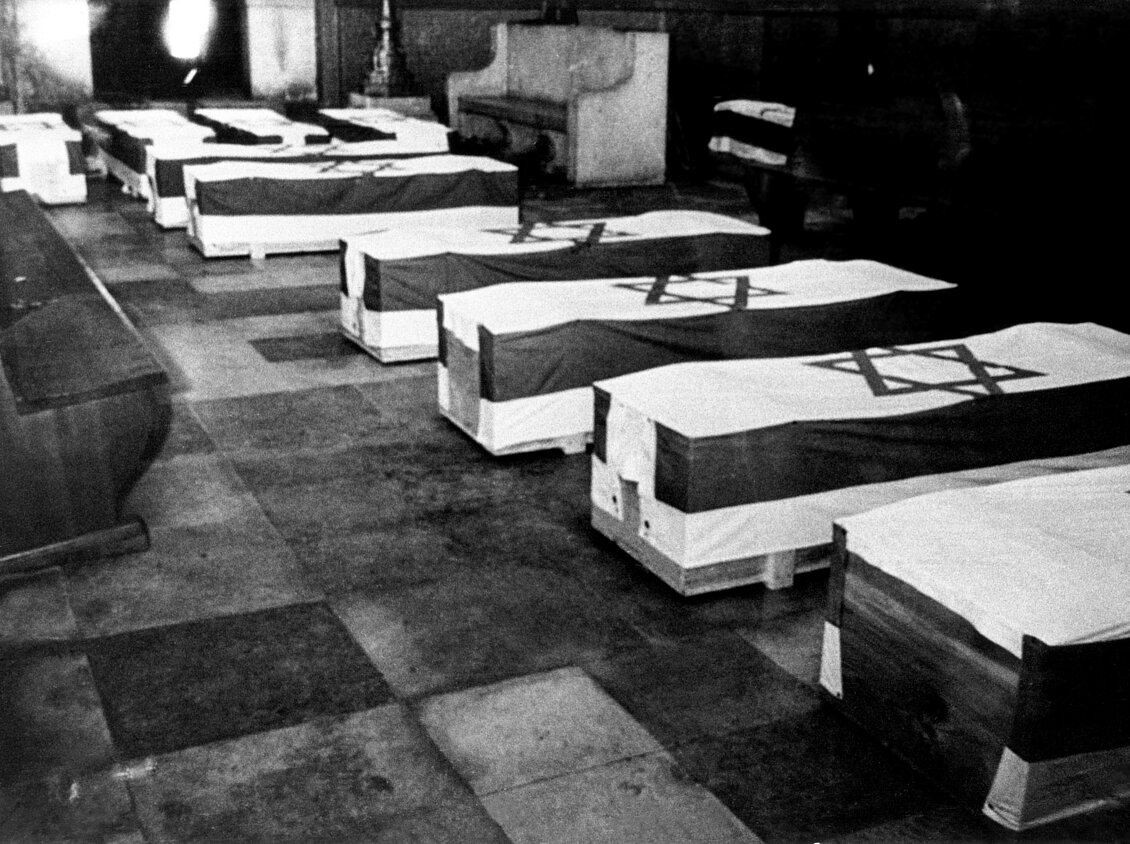
While the operation in Fürstenfeldbruck was still ongoing, a false report circulated that all the hostages had been freed, with government spokesman Conrad Ahlers even announcing it on television. However, at around 3 a.m., the correction was issued: all the hostages had in fact been murdered. Five of the eight terrorists were killed, and three arrested. Autopsies later revealed that eight Israelis died from gunshot wounds, and one hostage, David Berger, succumbed to smoke inhalation.

A memorial service was held the next day, September 6, when IOC President Avery Brundage announced that despite the catastrophe: “The games must go on!” Competitions had already resumed by the time the coffins of the murdered Israeli athletes were being flown out on September 7.
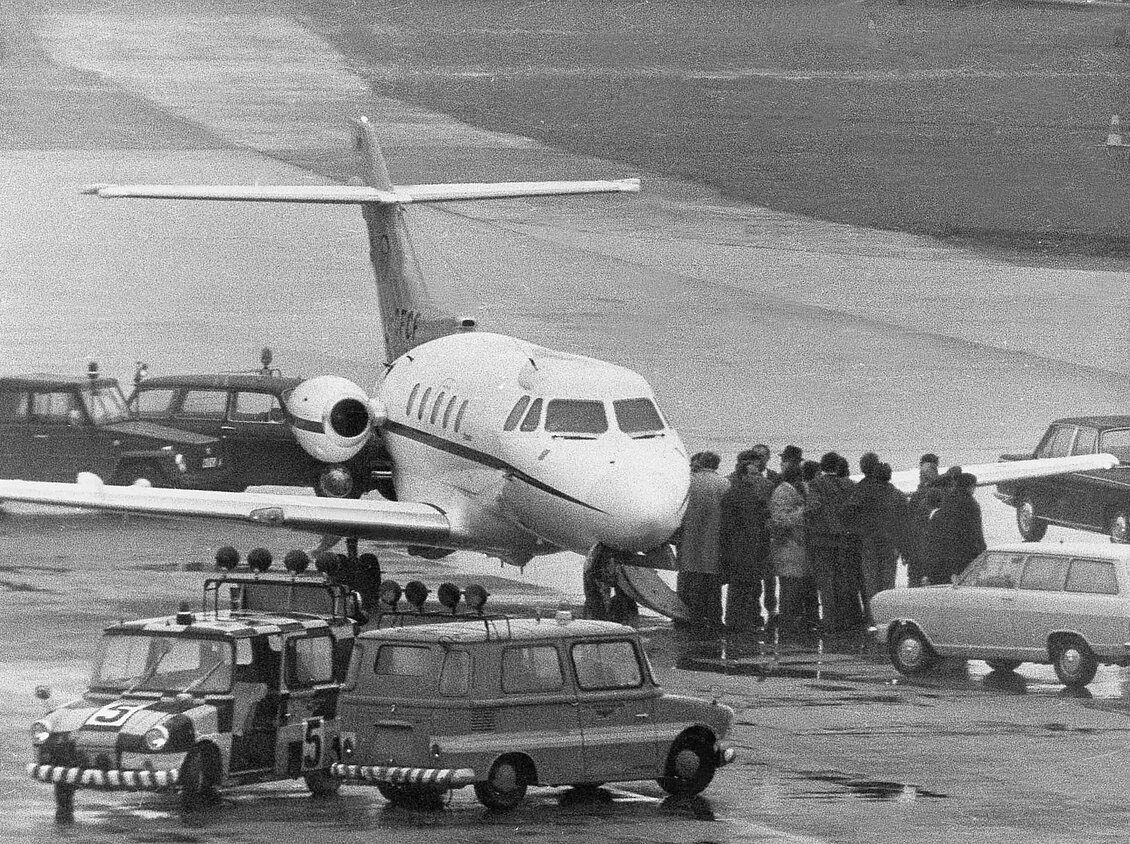
On October 29, 1972, less than eight weeks after the attack, Palestinian terrorists hijacked the Lufthansa airplane Kiel and leveraged the release of the three imprisoned hostage-takers. The image shows the three men being flown from Munich to Zagreb. To this day, these men have never faced legal prosecution, even as a murder investigation continues involving the two suspects who are still believed to be alive.
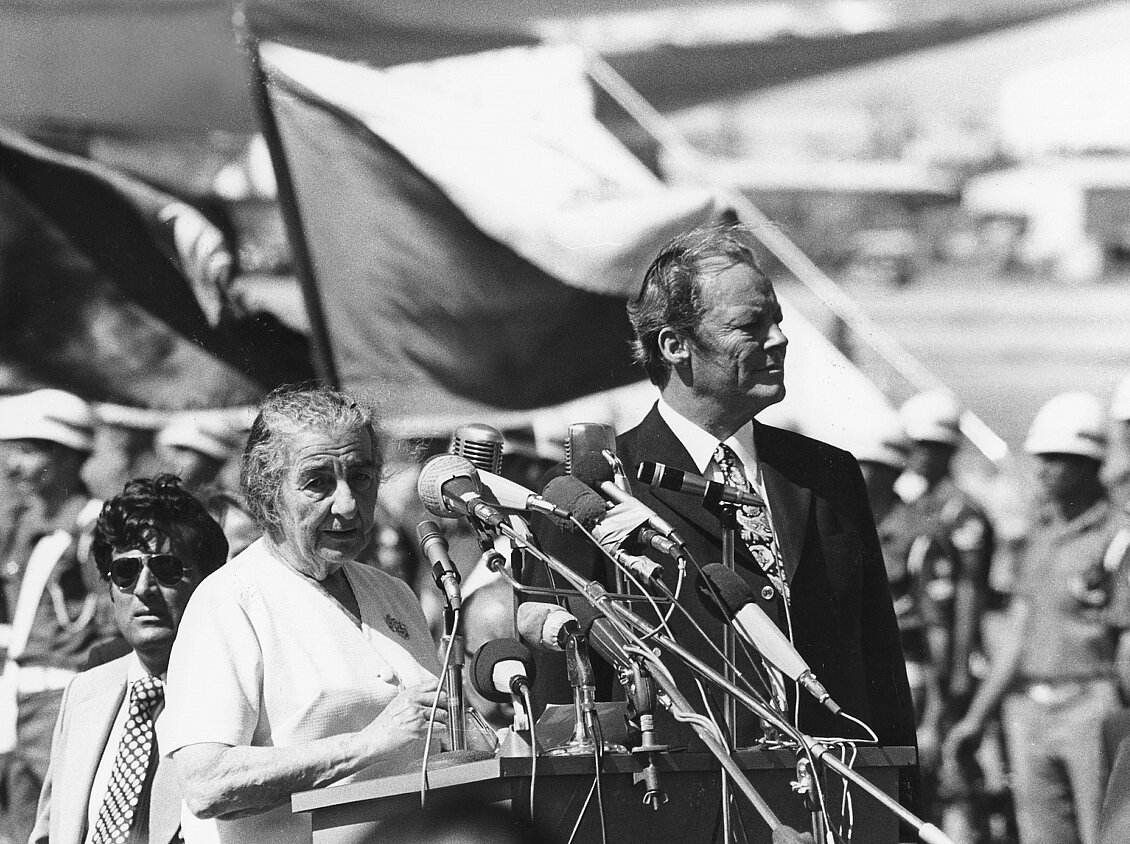
The attack at the Olympics and the coerced release of the terrorists had a direct impact on West German-Israeli relations. Chancellor Willy Brandt’s state visit to Israel in the summer of 1973 took place amidst these challenging circumstances. Relations with Arab states and West Germany’s policy towards the Palestinian Liberation Organization (PLO) would change as well. The event also shaped the West German perception of the threat of terrorism, leading, for example, to the creation of special security units such as GSG 9.

For decades, the relatives of the eleven Israeli victims fought for explanations, adequate compensation, and a worthy commemoration. “The attack was followed by years and decades of silence, repression, and growing indifference towards the fate of the survivors,” German President Frank-Walter Steinmeier recounted, 50 years after the attack, and asked the families for forgiveness. It also took 50 years for Germany to come to an agreement with the relatives on adequate compensation. Steinmeier emphasized the need for a comprehensive academic study on the matter: “How could all that happen? We must address this question and pursue answers.”
In memory of
In memory of the twelve victims of the attack at the 1972 Olympics.
- David Mark Berger1944 – 1972
Born: May 24, 1944, Cleveland, Ohio
Died: September 6, 1972, FürstenfeldbruckDavid Berger grew up as the son of a Jewish doctor in Cleveland, Ohio. He began weightlifting at the age of 13. Berger studied psychology and business administration, and earned a doctorate in law. In 1970, Berger emigrated to Israel. His great dream was to participate in the Olympic Games. He was 28 years old when he traveled to Munich in 1972 with his sister Barbara, with his younger brother Fred also on hand as a spectator. David Berger was eliminated early in the competition but chose to remain with his teammates in the Olympic Village.
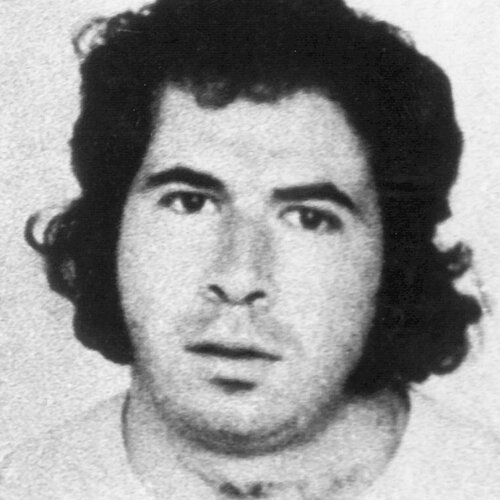
Image: picture alliance - Ze’ev Friedman1944 – 1972
Born: June 10, 1944, Prokopyevsk, USSR
Died: September 5, 1972, FürstenfeldbruckFridman’s parents were originally from Poland and fled to the Soviet Union to escape the Nazis. The family returned to Poland when Zeev was 13 years old. Three years later, in 1960, the family emigrated to Israel. Initially a gymnast, Fridman later took up weightlifting instead. He was the Israeli bantamweight champion for seven years, achieving international success as well. The Munich Games were meant to be both the pinnacle and the conclusion of his athletic career, and he planned to become a physical education teacher afterward. Fridman set several Israeli records in Munich. On September 3, he wrote a postcard to his family about how much he was looking forward to returning home.
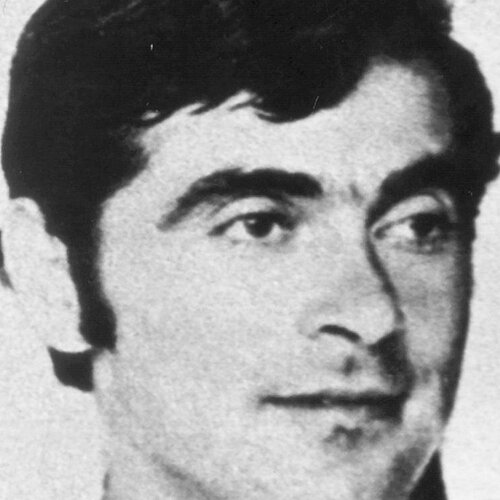
Image: picture alliance - Yosef Gutfreund1931 – 1972
Born: November 1, 1931, Chișinău, Romania
Died: September 5, 1972, FürstenfeldbruckYosef Gutfreund survived the Shoah, together with his parents and sister, in various hiding places in Romania, Austria, and Hungary. In 1948, the Gutfreund family emigrated to Israel, where Yosef began wrestling. He initially worked at his parents’ guesthouse, before taking up the electrical trade. He and his wife Rachel had two daughters. Gutfreund traveled as a referee to tournaments in Asia, America, and Europe. The 1972 Munich Olympics were the 40-year-old’s third Games as a referee. Gutfreund chose not to stay in a hotel but elected to live together with the Israeli team in the Olympic Village.
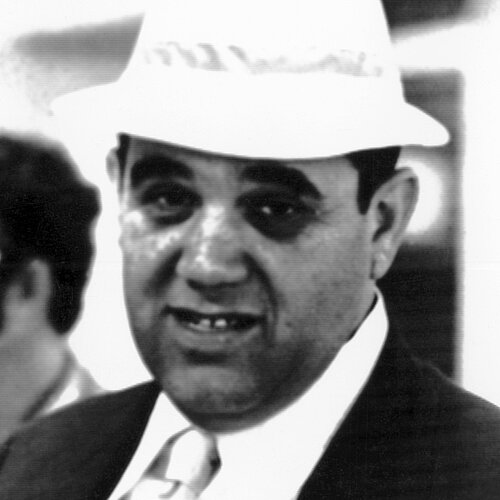
Image: picture alliance - Eliezer Halfin1948 – 1972
Born: June, 18 1948, Riga, USSR
September 5, 1972, FürstenfeldbruckEliezer Halfin’s parents were both widowed when they met, and a large part of their families had been murdered in the Shoah. Eliezer and his sister grew up in Riga, where he achieved success as a freestyle wrestler from a young age. After years of waiting for an emigration permit, the family moved to Israel in 1969. He met his coach Moshe Weinberg at the Wingate Institute, and they soon developed a close friendship. From 1969 to 1972, Halfin was the Israeli flyweight champion. Participating in the Olympic Games was a lifelong dream for the 24-year-old, who was recently engaged to be married.
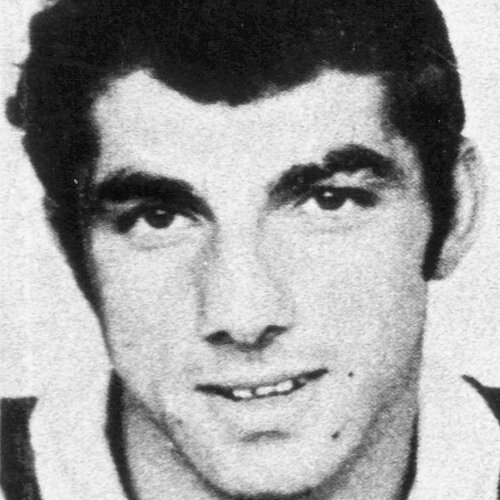
Image: picture alliance - Yosef Romano1940 – 1972
Born: April 15, 1940, Benghazi, Italian Libya
Died: September 5, 1972, MunichYosef Romano was born in 1940, in the midst of the war raging in Benghazi, present-day Libya. In 1946, his family fled to what was then Palestine to escape anti-Jewish riots. Romano, who had eleven siblings, trained as a decorator, with his talent for weightlifting only being discovered when he was 20. By 1972, Romano was already very well-known in Israel, having been the national middleweight champion for ten years since 1962. He and his wife Ilana had three children. Romano was injured during the preliminary rounds in Munich. Because of this, he was scheduled to leave for Israel early on September 6 to undergo surgery.
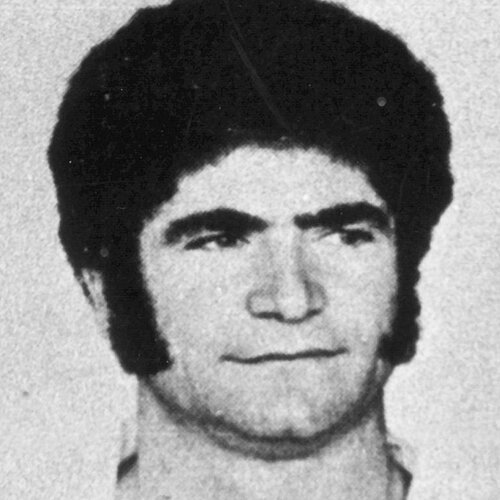
Image: picture alliance - Kehat Shorr1919 – 1972
Born: February 21, 1919, Podu Iloaiei, Romania
Died: September 5, 1972, FürstenfeldbruckKehat Shorr grew up in Romania. He avoided deportation during the Second World War by fleeing to the Carpathian Mountains with his future wife Sarah and part of her family. He became the Romanian champion in sport shooting several times before beginning his career as a coach. In 1963, he was finally able to move to Israel with his wife and daughter Michal after being denied permission by the People’s Republic of Romania for years. Once in Israel, Shorr became the national sport shooting coach, participating in the 1968 Olympic Games in Mexico City. The experienced coach accompanied shooters Henry Hershkovitz and Zelig Shtorch to Munich, both of whom managed to escape the attack.
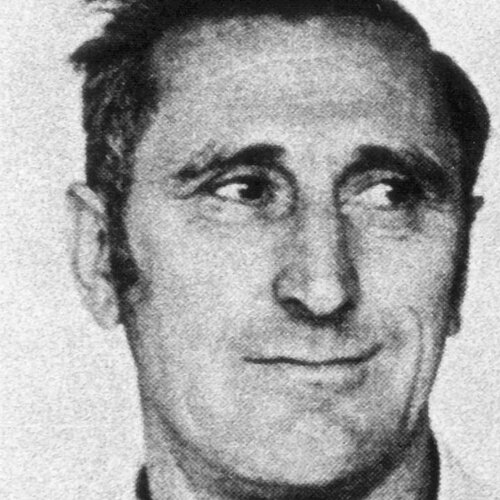
Image: picture alliance - Amizur Shapira1932 – 1972
Born: July 9, 1932, Tel Aviv, Palestine
Died: September 5, 1972, FürstenfeldbruckFrom a young age, Tel Aviv-born Amizur Shapira was a successful athlete and one of Israel’s fastest sprinters. Following his active career, he studied psychology, education, literature, and sports, eventually becoming the head coach of the national track and field team. He participated as a coach at the 1964 Tokyo Olympics. The father of four traveled to Munich with sprinter and hurdler Esther Shahamorov, who was Israel’s greatest hope to win a medal and who qualified for the semifinals in the 100-meter hurdles on September 4. Shahamorov would never in fact get to run her race, however, accompanying her coach’s coffin back to Israel instead.
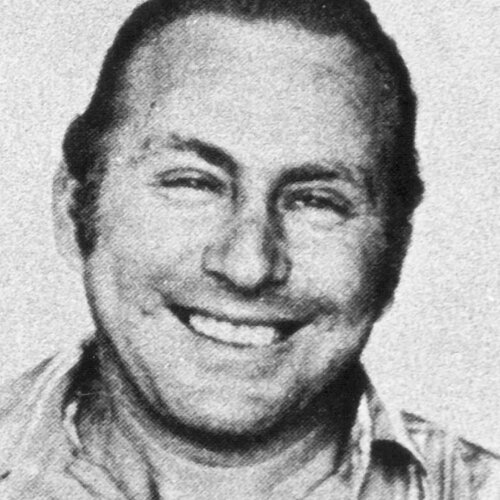
Image: picture alliance - Jacob Shpringer 1921 – 1972
Born: June 10, 1921, Kalisz, Poland
Died: September 5, 1972, FürstenfeldbruckJacob Shpringer was 18 years old when Germany invaded Poland in 1939. His parents and siblings were murdered in the Shoah, while Jacob was able to flee to the Soviet Union, returning to Poland after the war. After studying sports, Shpringer worked at the Ministry of Sport in Warsaw and as a physical education teacher. He served as a weightlifting referee at the 1956 Melbourne Olympics. He emigrated to Israel in 1957 with his wife Shoshana and their two children. In Israel, he coached the national weightlifting team. Israel sent him as a referee to the 1960 and 1964 Olympics. In Munich, the now 51-year-old opted not to stay in a hotel but to remain with his team in the Olympic Village.

Image: picture alliance - Mark Slavin1954 – 1972
Born: January 31, 1954, Minsk, USSR
Died: September 5, 1972, FürstenfeldbruckMark Slavin grew up in the Soviet Union and began wrestling at the age of nine. He attended an elite sports school and became the Soviet junior middleweight champion in 1971. Due to the prevalence of antisemitism in the country, Slavin applied to emigrate, which led to his titles being revoked and him being banned from any further competitions. In May 1972, he moved to Israel, was quickly granted citizenship, and qualified for the Israeli Olympic team. The young athlete was enthusiastic about the Olympic idea. In Munich, he met with wrestlers from the Soviet Union and exchanged pins with Arab athletes. On September 5, the 18-year-old was scheduled to take part his first match but became the youngest victim of the attack instead.
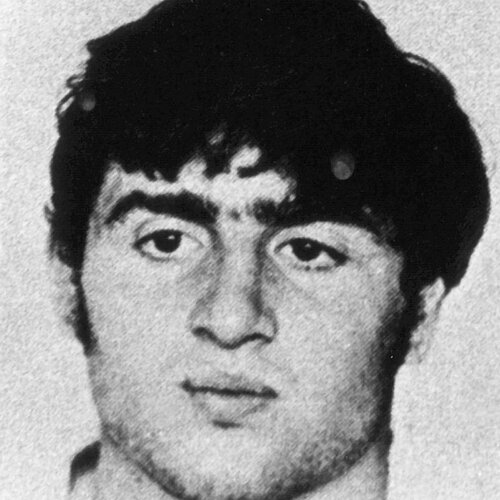
Image: picture alliance - Andrei Spitzer1945 – 1972
Born: July 4, 1945, Timişoara, Romania
Died: September 5, 1972, FürstenfeldbruckAndrei Spitzer grew up in Romania as the son of two Shoah survivors. He lost his father at an early age. Spitzer achieved success in Romania as a fencer before his family emigrated to Israel in 1964. Spitzer trained to become a coach and passed on his passion to young people. In 1968, he taught in the Netherlands, where he met his future wife, Ankie. The couple initially traveled together to Munich in 1972, staying outside the Olympic Village. When their young daughter Anouk fell ill in the Netherlands while with her grandparents, the Spitzers returned home to be with her. Andrei Spitzer then went back to the Olympic Village alone, just a few hours before the attack.
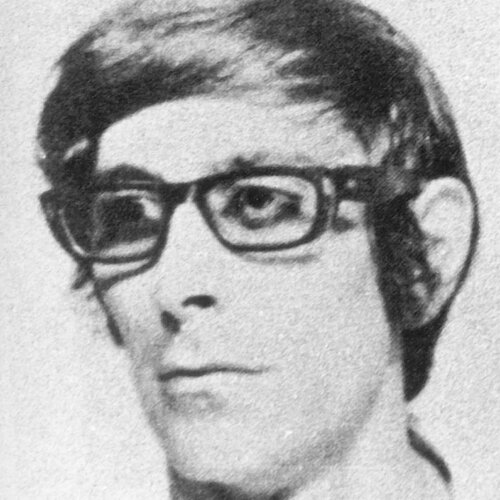
Image: picture alliance - Moshe Weinberg1939 – 1972
Born: September 19, 1939, Haifa, Palestine
Died: September 5, 1972, MunichMoshe Weinberg’s family came from Austria. His paternal grandfather was treated brutally at the Dachau Concentration Camp and died as a result. Moshe’s father managed to escape to what was then Palestine in 1938. There, Moshe, known as “Muni,” was raised by his maternal grandparents. After a successful career as a wrestler, Weinberg became a coach. Just a few weeks before his departure for Munich, in August 1972, Moshe Weinberg’s wife Miriam gave birth to their son. At the Olympic Games, Weinberg coached wrestlers Eliezer Halfin and Mark Slavin, who were also murdered.
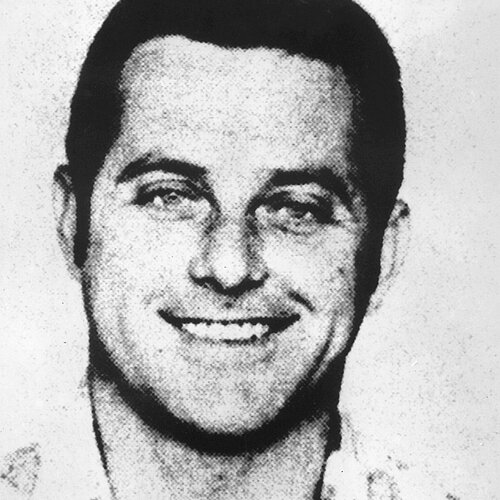
Image: picture alliance - Anton Fliegerbauer1940 – 1972
Born: March 5, 1940, Westerndorf
Died: September 5, 1972, FürstenfeldbruckAnton Fliegerbauer grew up on a farm in Westerndorf, Lower Bavaria. After initially training in agriculture, he applied to join the police in 1958. Beginning his service in Landshut, he transferred to Munich as a police sergeant in 1964. On September 5, 1972, the day of the attack, Fliegerbauer was originally on leave. He planned to travel to Lower Bavaria with his wife Maria and their four-year-old son Alfred. A few days earlier, he had suffered light injuries in a confrontation with demonstrators. Known as an excellent marksman, the 32-year-old was nevertheless called to duty once the hostages were taken in the Olympic Village and was deployed to Fürstenfeldbruck that evening
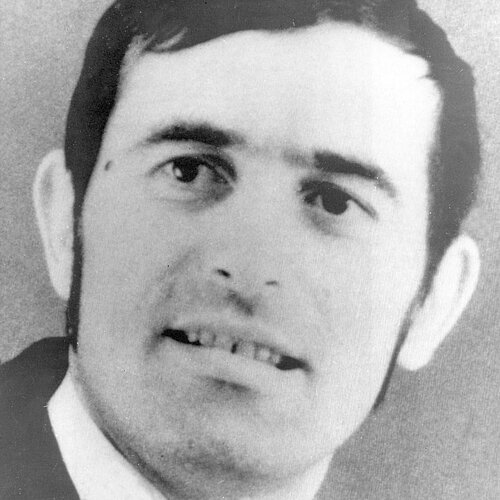
Image: picture alliance
